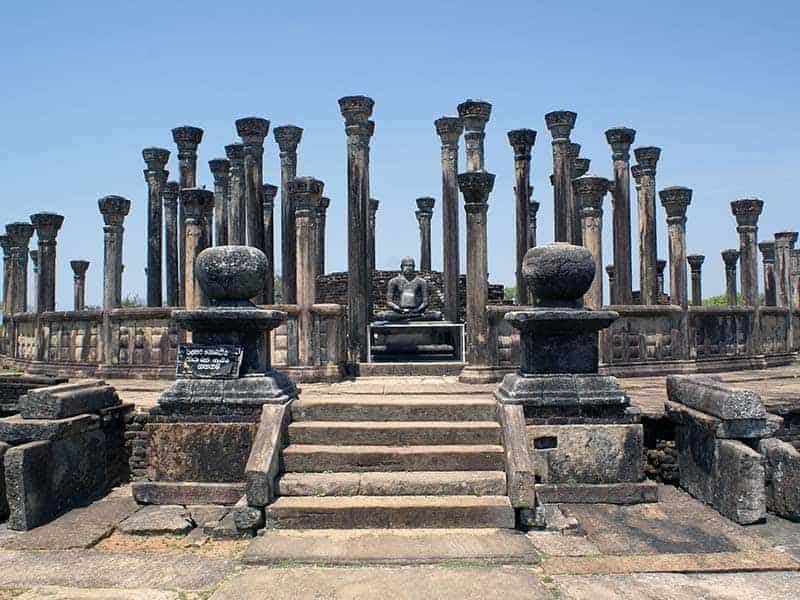The kingdoms of Anuradhapura and Polonnaruwa are famous for their vatadage, the protective colonnaded structures around many a religious building such as a smaller stupa, normally included with a collection of artworks such as Buddha or divine images. One prime example is the Medirigiriya vatadage, a beautifully well-preserved monument that shows us the true appearance of most of them. This building is actually part of a large monastic complex of brick and stone monuments dating back to the Anuradhapura period, between the First and Second Centuries AD, and added to by later rulers.
The other buildings in the Medirigiriya complex-an area which once stretched six hundred acres-include a few small stupas and statues, as well as the remains of a monastery, a medicine trough, and the remains of a toilet. Sadly over half of this area was sold or destroyed to make way for development in the region. The centerpiece is the vatadage itself.
It has high foundations with staircases leading up to the centre of the monument and is built up on a small rock, and while no trace of the actual stupa remains to this day there are four seated Buddha images, beautifully preserved. Certainly, some reconstructions show these monuments with a wooden roof with a spire in the manner of a gem, as per certain historical publications. It is believed to be a universal standard for all similar structures and continues down to the Polonnaruwa vatadage and other vatadage throughout Sri Lankan history. The Medirigiriya vatadage consists of a flat space surrounded by three concentric circles of columns of varying heights, with the tallest being part of the innermost circle at sixteen to seventeen feet in height and the smallest at about nine feet.
Written by Vasika Udurawane for Travel Lanka Compass



0 Comment